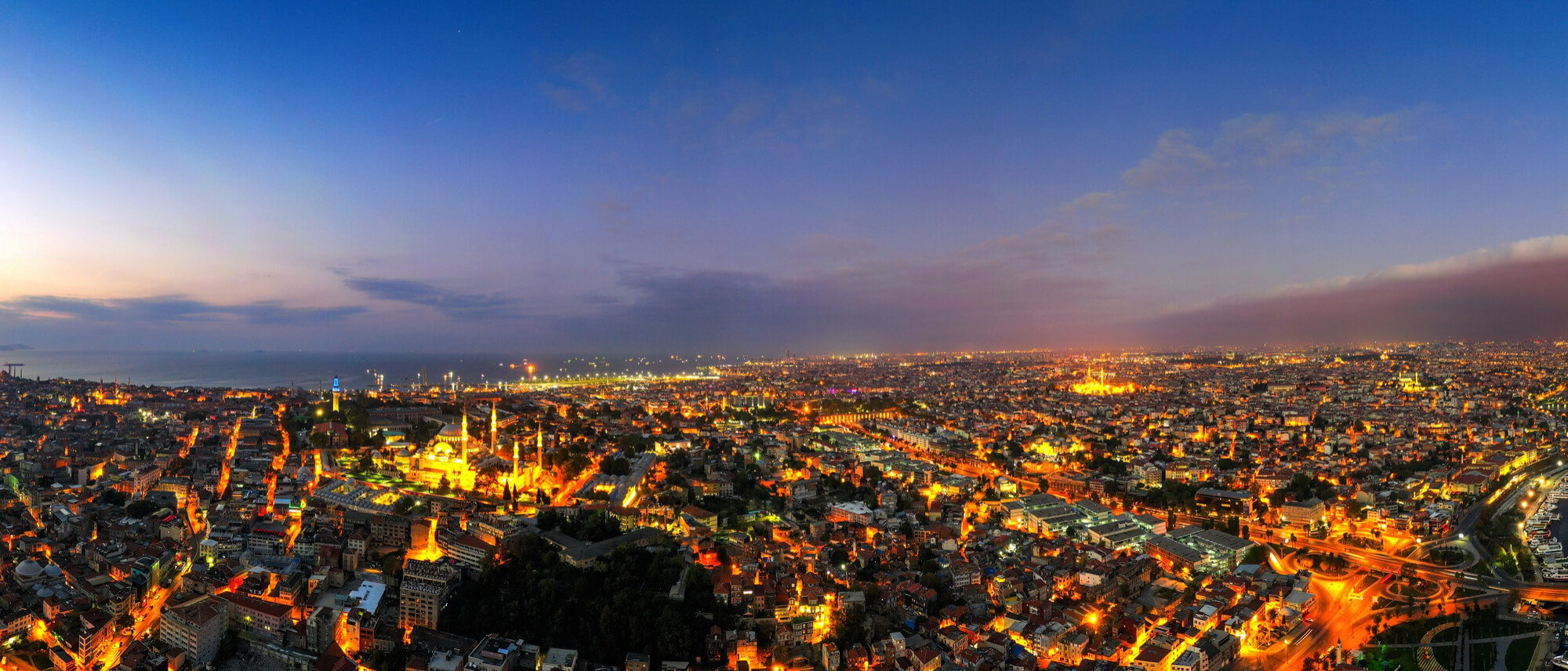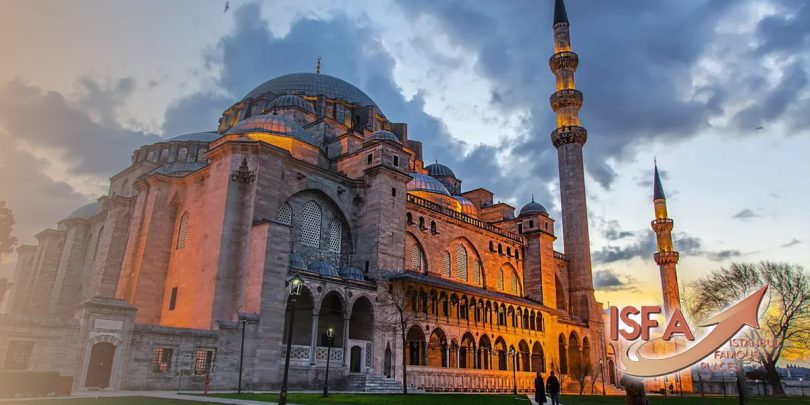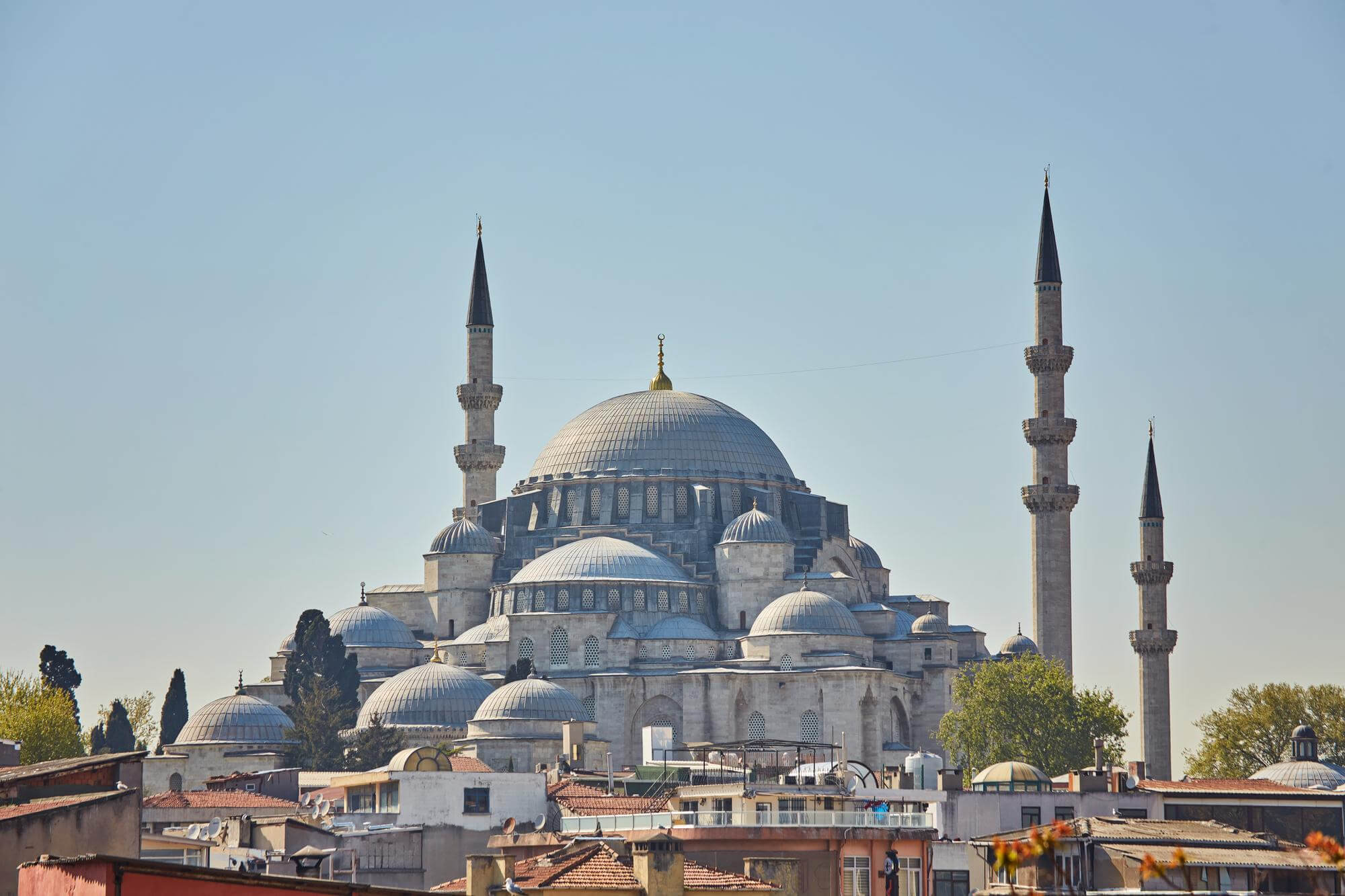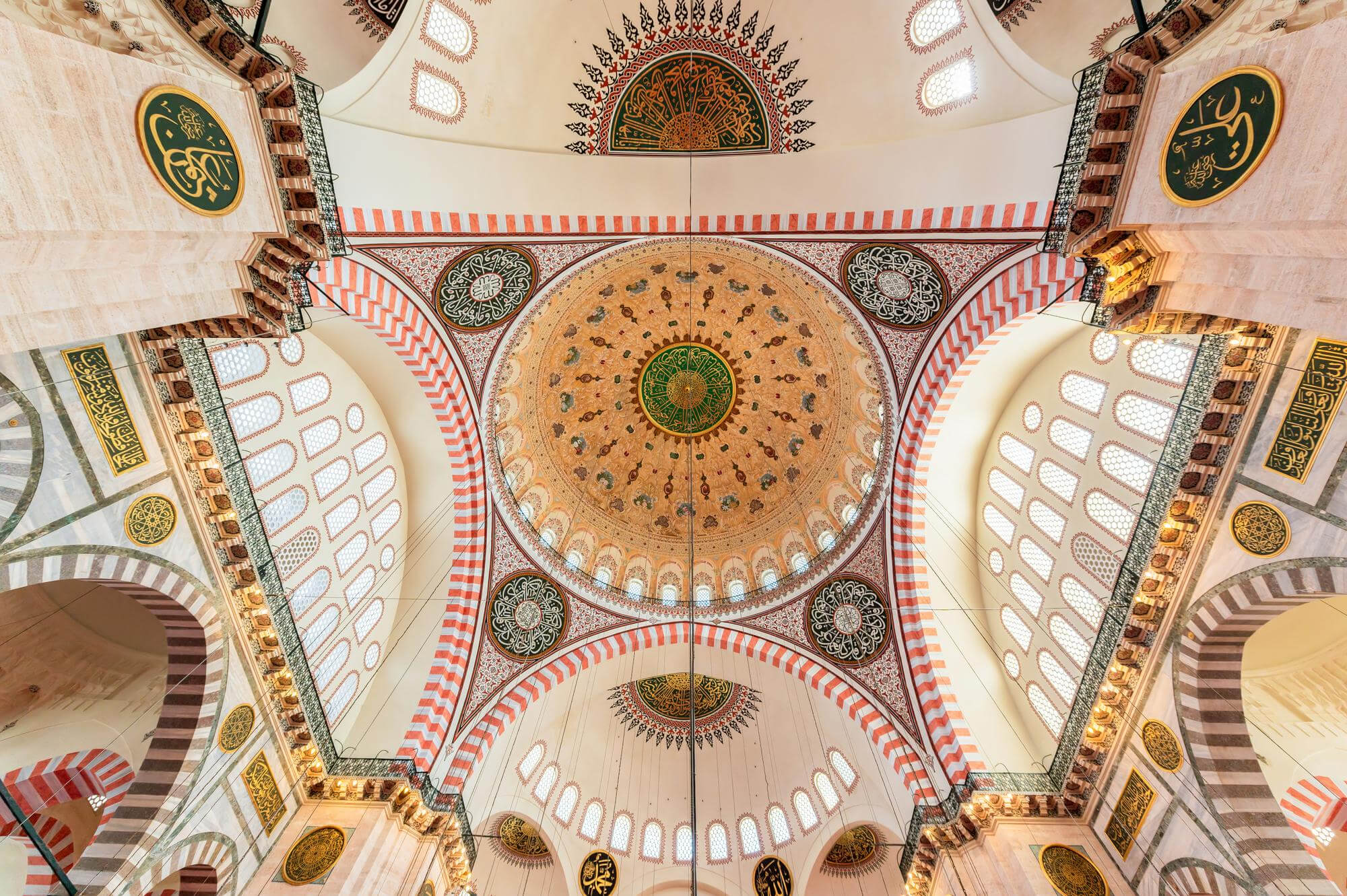Overview of the Sulaymaniye Mosque
The Sulaymaniye Mosque, also known as the Suleymaniye Mosque, is an architectural marvel that adorns Istanbul’s skyline. It was built in the 16th century as a testament to the Ottoman Empire’s opulence and artistic achievements during the reign of Suleiman the Magnificent. This historic mosque is a symbol of Istanbul’s cultural heritage and architectural excellence, as well as a place of worship.
The Sulaymaniye Mosque, with its grandeur and elegance, is one of the city’s most important landmarks, attracting both locals and tourists. The mosque was designed by renowned architect Sinan and features a harmonious blend of Islamic and Byzantine architectural styles, making it a masterpiece of its time. Visitors are captivated by the mosque’s impressive dome, towering minarets, and intricate detailing, which transport them back to the Ottoman Empire’s golden age.
The Sulaymaniye Mosque’s Long History
The Sulaymaniye Mosque’s history is steeped in Ottoman Empire glory. It was commissioned by Suleiman the Magnificent, one of the empire’s most powerful sultans, to demonstrate the Ottomans’ strength and splendor. The mosque, designed by the legendary architect Mimar Sinan, began construction in 1550 and took seven years to complete. It stands as a testament to the Sultan’s vision and the skill of its builders.
The mosque complex also includes a school, a hospital, a food bank, and a hammam (Turkish bath). This multifaceted approach was typical of Ottoman mosque complexes, and it sought to meet both spiritual and practical needs. As you explore the Sulaymaniye Mosque, you will learn about its architectural splendor as well as its deep historical significance.
The Sulaymaniye Mosque has a special place in Istanbul’s history because it was commissioned by Sultan Suleiman the Magnificent, one of the Ottoman Empire’s most powerful rulers. The mosque, completed in 1557, is a testament to the Sultan’s ambition and the skill of its builders. It is a true architectural masterpiece due to its intricate design and majestic domes.
Setting and Location
The Sulaymaniye Mosque enjoys an enviable location atop Istanbul’s Third Hill. It provides breathtaking panoramic views of the city and the Golden Horn from this vantage point.
The mosque’s strategic location adds to its allure, making it the city’s focal point. As you approach the mosque, you’ll be struck by its commanding presence and the breathtaking views it offers. The combination of its location and architectural magnificence provides visitors and worshippers with an unforgettable experience.
The Sulaymaniye Complex Is More Than a Mosque
The Sulaymaniye Mosque is more than just a religious site; it is part of a large complex that has served many functions throughout history. This complex contains a wide range of structures, each with its own function.
The mosque complex includes a school (medrese), a hospital (darüşşifa), a soup kitchen (imaret), and a Turkish bath (hammam). These additional structures reflected not only the Ottoman Empire’s commitment to the well-being of its citizens but also Islamic values of charity and education.
The complex was critical in meeting the community’s physical, spiritual, and intellectual needs. Today, these structures provide visitors with a glimpse into the multifaceted nature of Ottoman life.
Sulaymaniye Mosque Architecture: An Ottoman Design Wonder
The Sulaymaniye Mosque’s architecture is a triumph of Ottoman design, with a harmonious blend of Islamic and Byzantine architectural elements.
The massive central dome of the mosque, supported by four towering minarets, is an iconic feature of the Istanbul skyline. The mosque’s visual appeal is enhanced by the use of delicate tile work, intricate calligraphy, and elegant marble detailing.
Mimar Sinan, the chief architect, used cutting-edge engineering techniques to build the massive dome, which is one of the world’s largest. The spacious and airy prayer hall inside the mosque is illuminated by the soft glow of natural light filtering through stunning stained glass windows. Geometric patterns, floral motifs, and inscriptions on the walls and domes demonstrate Islamic decorative arts mastery.
Exterior Appeal: The Sulaymaniye Mosque Facade
The Sulaymaniye Mosque’s exterior is adorned with exquisite details that showcase the craftsmanship of the time’s artisans. Intricate tile mosaics with geometric patterns and Quranic calligraphy adorn the facade. The ornate decorations extend to the courtyard and minarets of the mosque, creating a sense of grandeur and reverence.
The Sulaymaniye Mosque’s minarets are particularly notable. Each minaret is individually designed, with varying tile patterns and colors. These minarets function as both architectural features and call-to-prayer elements. They bear witness to the meticulous attention to detail that went into the mosque’s design, from its grand dome to its minarets.
Interior Serenity: Inside the Sulaymaniye Mosque
The interior of the Sulaymaniye Mosque is a fascinating experience. The vast prayer hall, with its expansive dome, exudes peace and reverence. The interior design is an expert combination of Islamic architecture and artistic embellishments. The main prayer hall is graced with graceful arches, elegant columns, and a beautifully adorned mihrab (prayer niche) that directs worshippers to Mecca.
The stained glass windows are one of the most notable features of the interior. These windows transform the daylight into a soft, colorful glow that fills the space with a soothing atmosphere. The intricate patterns on the windows add to the mosque’s visual appeal. As you walk through the interior, you’ll notice how every detail, from the intricately designed carpets to the finely crafted chandeliers, adds to the overall sense of beauty and spirituality.
The Role of the Suleymaniye Mosque in Contemporary Istanbul
The Sulaymaniye Mosque is still an important part of modern Istanbul. It is still an active place of worship, welcoming Muslims from all over the world to pray. The mosque is also a cultural and educational center, in addition to its religious significance. It hosts a variety of cultural exchange and understanding events, lectures, and exhibitions.
Visitors to the Sulaymaniye Mosque can experience firsthand Istanbul’s unique blend of history and modernity. While preserving its rich heritage, the mosque adapts to modern needs, making it relevant to today’s society. The area around the mosque is also lively, with markets, shops, and cafes catering to both tourists and locals.
Efforts to Preserve and Restore
It is critical to preserve historical landmarks such as the Sulaymaniye Mosque. To ensure that this architectural gem remains in pristine condition, the Turkish government and various organizations have undertaken extensive preservation and restoration efforts. Careful cleaning, repair of damaged elements, and restoration of intricate tile work and calligraphy are all part of these efforts.
Turkey demonstrates its commitment to preserving its cultural heritage for future generations by investing in the maintenance and restoration of the Sulaymaniye Mosque. The meticulous work of restoration experts allows visitors to experience the mosque as it was in its heyday, complete with stunning architectural details and vibrant colors.
A Visit to The Sulaymaniye Mosque
Exploring the Sulaymaniye Mosque is a rewarding experience for those planning a trip to Istanbul. The mosque is open to the public, and its tranquil atmosphere invites quiet reflection and admiration of its architectural splendor. As a sign of respect for the sacred space, visitors are asked to dress modestly, covering their shoulders and knees.
The mosque is generally open during regular prayer times, with a midday break for tourists. It’s best to check the mosque’s visiting hours ahead of time so you can plan your visit accordingly. While admission to the mosque is free, donations to support its upkeep are greatly appreciated. Remember to take off your shoes before entering and to be considerate of worshippers during prayer times.
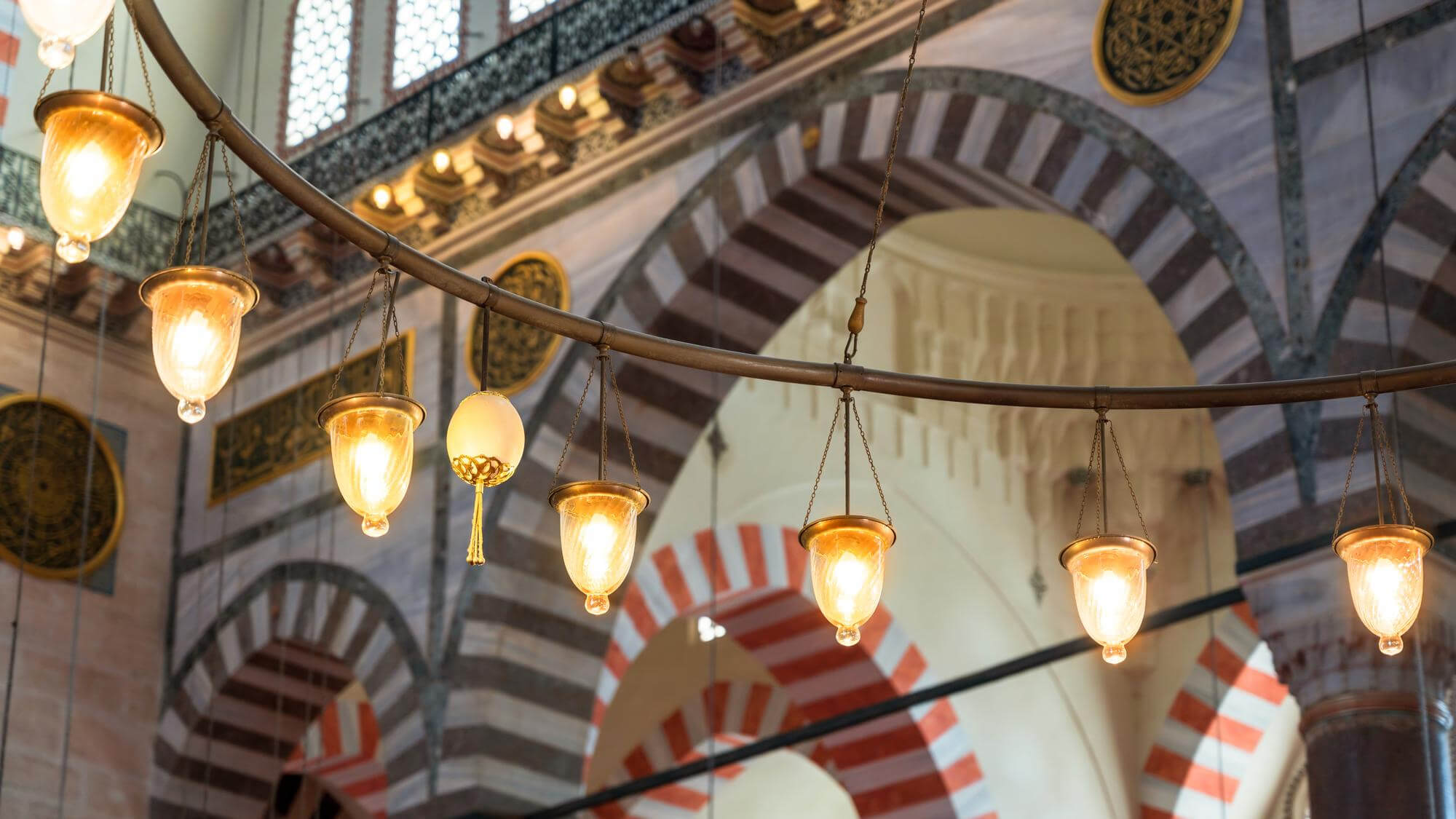
Cultural Events and Significance
The Sulaymaniye Mosque is more than just a place of worship; it also serves as a cultural center, hosting a variety of events and activities. These events range from lectures on Islamic art and history to calligraphy and Islamic manuscript exhibitions. The mosque also serves as a venue for interfaith dialogue and cultural exchange, which promotes a better understanding of Islamic culture and heritage.
The Sulaymaniye Mosque is a cultural hotspot all year, attracting scholars, artists, and visitors from all walks of life. It is critical to the promotion of Istanbul’s and Turkey’s rich cultural tapestry. Whether you want to learn more about Islamic art or simply experience Istanbul’s cultural vibrancy, the Sulaymaniye Mosque provides a window into this world.
The Sulaymaniye Mosque’s Timeless Beauty
Finally, the Sulaymaniye Mosque is a timeless testament to the Ottoman Empire’s grandeur and artistic brilliance. Its history, architecture, and long-lasting cultural significance make it a must-see in Istanbul. A visit to this mosque is a journey into the heart of Istanbul’s rich heritage, whether you’re drawn to its majestic dome, intricate tile work, or the tranquility of its interior. It continues to inspire awe and reverence, capturing the essence of both the Ottoman past and this magnificent city’s vibrant present.
